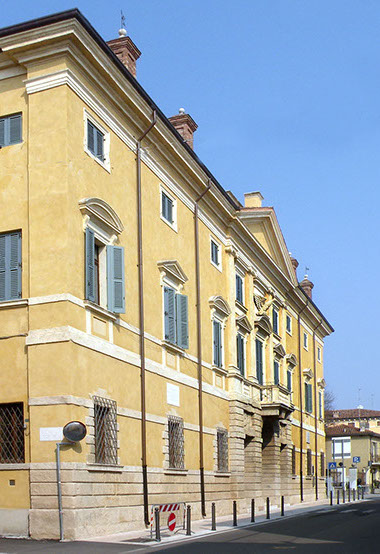Progetto di valorizzazione
del territorio di Valeggio sul Mincio
Palazzo Guarienti
XVIII SECOLO
Nel centro storico di Valeggio è ubicato questo palazzo che fu residenza di campagna dei marchesi Guarienti di Verona.
Costruito su fabbriche più antiche, l’imponente edificio venne progettato da uno dei meno noti architetti veronesi del Settecento, Piero Ceroni (1737-1802).
Di lui si conoscono pochissime opere eseguite e meno ancora della sua biografia.
Fra i suoi lavori risulta la progettazione del duomo di Villafranca, copia perfetta della celebre chiesa palladiana del Redentore di Venezia.
Ceroni fu attivo in Valeggio fra il 1770 e il 1775, impegnato nella costruzione di questo palazzo, contrassegnato dalle rigorose linee neoclassiche, espressione di solidità e di severità.
Fino al XIX secolo esisteva anche l’ala destra della costruzione ora mancante. La facciata è coronata da un timpano un tempo ornato ai vertici da tre statue di eroi mitologici.
L’interno si caratterizza per un vasto atrio, spaziato da quattro imponenti colonne, cui si accede attraverso i tre portali che danno sulla pubblica via e da quello sul cortile.
Su un lato si diparte lo scalone a due rampe che porta al piano nobile, dove si apre il grande salone d’onore sulle cui pareti e il soffitto sono stati scoperti, sotto ridipinture moderne, gli affreschi originali neoclassici.
Più volte rimaneggiato, dopo i Guarienti è stato in possesso dei Carteri fra il XIX e il XX secolo, per poi essere acquistato dall’Amministrazione comunale negli anni trenta del Novecento.
Palazzo Guarienti è sempre stato al centro della storia locale, sia per le tante vicende di cui è stato testimone, sia per aver dato ospitalità a personaggi del calibro di Napoleone Bonaparte che, proprio qui, nella primavera del 1796, incontrando il colonnello veneto Jacopo Giusti, sancì il definitivo crollo della Serenissima Repubblica di Venezia.
Il Palazzo è stato destinato nel corso del tempo a usi vari.
Dalla metà del XX secolo, ha ospitato un istituto scolastico, degli ambulatori e degli uffici comunali.
Diverse associazioni hanno avuto qui la loro sede.
Ora ospita la biblioteca comunale, l’università del tempo libero, sale polivalenti e spazi espositivi.
Guarienti Palace
18th CENTURY
This palace, in the historic center of Valeggio, was the country residence of the Marquises Guarienti of Verona.
Built on older factories, the imposing building was designed by one of the lesser-known 18th century Veronese architects, Piero Ceroni (1737-1802).
Very few of his works are known and less of his biography.
Among his works is the design of the Villafranca cathedral, a perfect copy of the famous Palladian church of the Redeemer in Venice.
Ceroni was active in Valeggio between 1770 and 1775, engaged in the construction of this palace, marked by rigorous neoclassical lines, an expression of solidity and severity.
The façade is crowned by a tympanum once decorated at the top with three statues of mythological heroes.
The interior is characterized by a vast atrium, spaced by four imposing columns, which can be accessed through the three portals that overlook the public street and the courtyard.
On one side, the two-flight staircase leads to the first floor, where the great hall of honor opens on whose walls and ceiling the original neoclassical frescoes have been discovered under modern repainting. It was remodeled several times.
After the Guarienti, it was in the possession of the Carteri between the 19th and 20th centuries, before being bought by the municipal administration in the thirties of the last century.
Palazzo Guarienti has always been at the center of local history, both for the many events of which it has witnessed and for having given hospitality to many personalities, like Napoleon Bonaparte who, right here, in the spring of 1796, meeting the Venetian colonel Jacopo Giusti, sanctioned the definitive collapse of the Most Serene Republic of Venice.
Over time the building was used for various purposes.
From the mid-twentieth century, it served as an educational institution, with clinics and city council offices.
Several associations have had their headquarters here.
Now it houses the public library, multipurpose rooms and exhibition spaces.
Palazzo Guarienti
18. Jhr.
Architektonische Route
In der Altstadt von Valeggio steht dieses Gebäude, das den Marchesen Guarienti aus Verona als Landsitz diente.
Das imposante Gebäude wurde von Piero Ceroni (1737-1802), einem der weniger bekannten Architekten Veronas im 18. Jahrhundert über alten Fabriken errichtet. Von Ceroni sind nur ganz wenige Werke und auch nichts von seiner Biographie bekannt. Zu seinen Arbeiten zählt der Entwurf des Doms von Villafranca, die eine perfekte Kopie der berühmten palladianischen Erlöserkirche von Venedig ist.
Ceroni arbeitet zwischen 1770 und 1775 am Bau dieses Gebäudes in Valeggio, das sich durch die strengen neoklassischen Linien als Ausdruck von Solidität und Strenge auszeichnet. Bis zum 19. Jahrhundert gab es auch den rechten Flügel der heute nicht mehr vorhandenen Konstruktion.
Die Fassade wird von einem Tympanon gekrönt, der einst an der Spitze von drei Statuen mythologischer Helden verziert war. Das Innere zeichnet sich durch einen großen Vorhof aus, der den Abstand zwischen vier riesigen Säulen bildet. Er ist über die drei Tore erreichbar, die auf die öffentliche Straße und in den Innenhof führen.
Eine Seite führt die große zweiteilige Treppe in das Zwischengeschoss mit dem großen Ehrensalon, an dessen Wänden und Decke unter modernen Gemälden die ursprünglichen neuklassischen Fresken zum Vorschein kamen. Er wurde mehrmals verändert und ging zwischen dem 19. und 20. Jahrhundert aus von den Guarienti an die Carteri über und danach von der Gemeindeverwaltung in den 30iger Jahren des 20. Jahrhunderts erworben.
Palazzo Guarienti stand wegen den zahlreichen Ereignissen, von denen das Zeuge wurde, und wegen seinen bedeutsamen Gästen, wie Napoleon Bonaparte, der hier im Frühling 1796 den venetischen Oberst Jacopo Giusti traf und das endgültige Ende der Seerepublik Venedig besiegelte, immer im Mittelpunkt der lokalen Geschichte.
Das Gebäude wurde im Laufe der Jahrhunderte für verschiedene Zwecke genutzt. Ab der Mitte des 20. Jahrhunderts befand sich darin eine Schule, Untersuchungszimmer und Gemeindebüros. Zudem hatten verschiedene Verbände hier ihren Sitz.
Heute befindet sich im Gebäude die Gemeindebibliothek, die Freizeituniversität, Mehrzwecksäle und Ausstellungsräume.
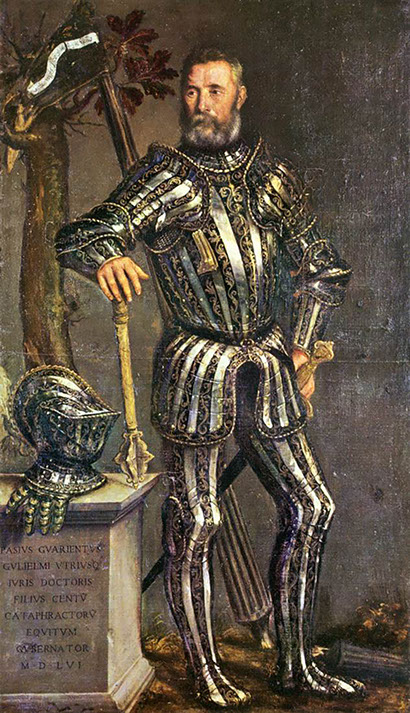
P.Guarienti
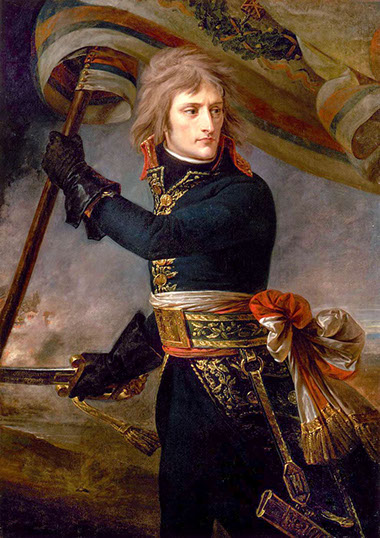
Napoleone Bonaparte
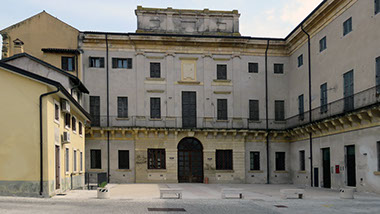
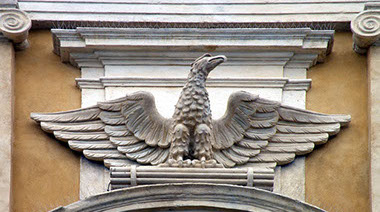
© 2019
Comune di Valeggio sul Mincio (VR)
Associazione Percorsi


